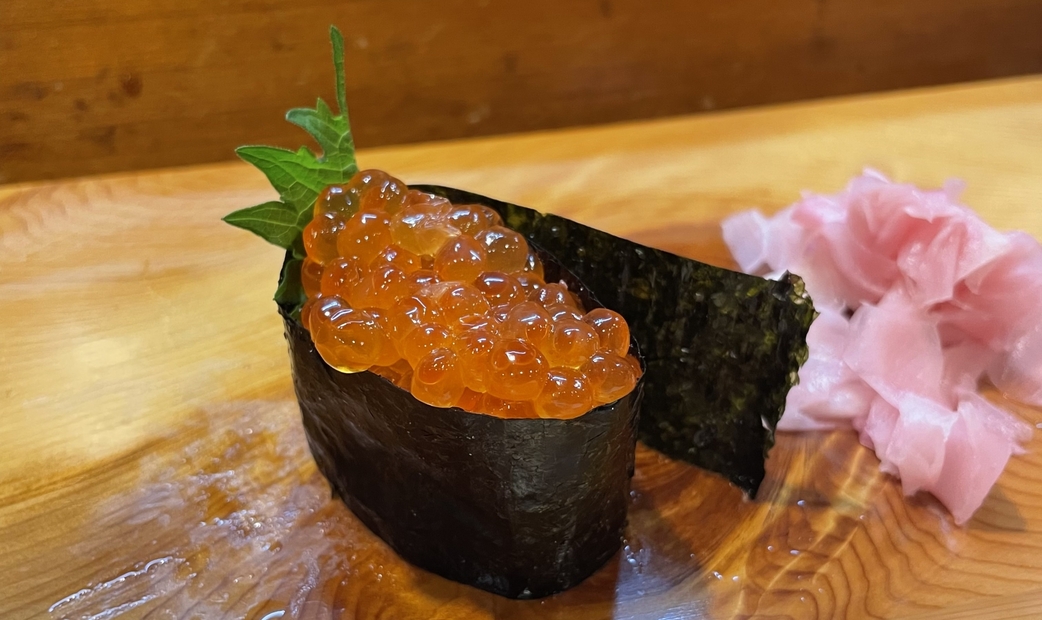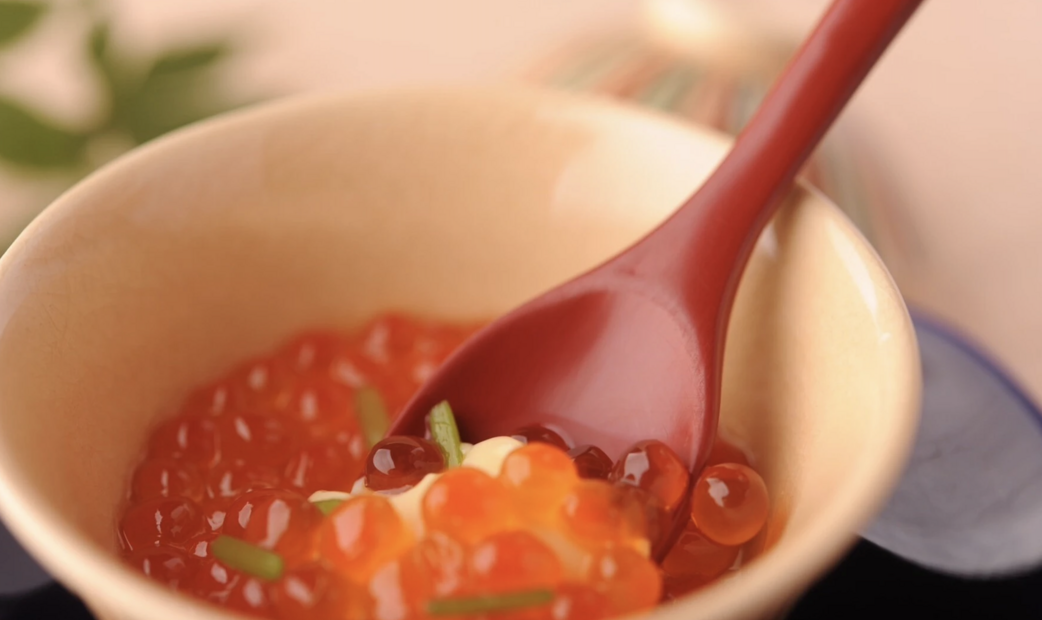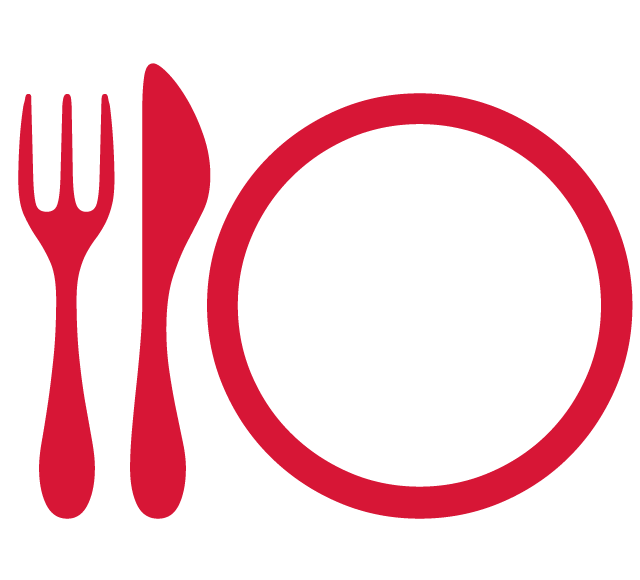
Ikura Sushi | What is Ikura? A Guide to Ikura in Sushi
The OMAKASE editorial team, an official Michelin partner, introduces Japanese ikura and the best sushi restaurants in Japan to enjoy this delicacy.
What is Ikura?
Ikura is a salted salmon roe, known for its vibrant red color and signature popping texture. While the term is sometimes used for trout roe, there are notable differences in size and price. Ikura consists of large fish eggs that can reach up to 8mm in diameter. The word "ikura" comes from the Russian ikra, meaning "fish roe." In Japan, ikura is considered a luxury delicacy.

Ikura vs. Fake Ikura
The true identity of fake ikura is artificial ikura developed by Japanese companies and manufactured in factories. It looks and tastes so similar to real ikura that it's quite difficult to distinguish between them. Artificial ikura is also inexpensive and is an excellent food product from an SDGs perspective. In recent years, salmon catches have declined and resources are being protected. Accordingly, ikura has become more expensive and is now a luxury item. Most Japanese people rarely eat real ikura anymore. However, it's quite difficult to reproduce the rich, authentic flavor of genuine ikura.
Ikura (Salmon Roe) vs. Ikura (Trout Roe)
Trout roe ikura is called "masuko" to distinguish it from salmon ikura. The difference is that salmon roe ikura is about one size larger and has a richer flavor. Trout roe is smaller in size and has a lighter, more refreshing taste.
The Difference Between Ikura and Sujiko
Many people confuse ikura and sujiko when using these terms. Even few Japanese people understand the difference. The difference between ikura and sujiko is whether they have been processed or not. Sujiko is salmon or trout roe taken directly from the fish in its natural state. Ikura is sujiko that has been processed to remove the ovarian membrane and debris, leaving only the individual eggs. Processing sujiko into ikura is quite a difficult task.
Soy Sauce-Marinated Ikura
Since ikura is raw fish roe, it is not suitable for long-term storage. Therefore, it is commonly marinated in soy sauce to improve preservation while making it more delicious. Marinating in soy sauce also reduces the fishy smell. Particularly in sushi restaurants, each establishment has its own method of making soy sauce marinade, with each shop creating its own secret soy sauce blend. The main ingredients for the soy sauce marinade are soy sauce, mirin, and sake, but each shop has its own unique preferences regarding the proportions and cooking time.
Salt-Cured Ikura
Salt-cured ikura is the most optimal way to enjoy the authentic flavor of ikura. Salt is added to ikura, which spoils easily, to improve its preservation. This removes excess moisture, making it easier to store while simultaneously concentrating the flavor of the ikura. Since salt-cured ikura brings out the true flavor of ikura clearly, high-quality ikura is often used. Some sushi restaurants also prefer to use salt-cured ikura.
How to Identify Delicious Ikura
Look for large grains with good freshness. Ikura loses its freshness quickly, so it needs to be processed while it's still fresh. When freshness deteriorates, ikura loses moisture and becomes dull or cloudy white in appearance.
Peak Season for Ikura
Ikura is at its best from September to October when salmon are carrying eggs for spawning. During this time, the roe is at its optimal size and texture. After the season ends, the egg membranes harden, affecting their signature texture.

Where Ikura is Produced
Hokkaido is Japan’s most renowned region for ikura. In autumn, salmon fishing is a seasonal tradition, and fresh ikura fills supermarket shelves. However, due to declining salmon populations in recent years, more imported ikura is now available in Japan.
Where to Eat Ikura in Japan
Ikura can be found at conveyor belt sushi restaurants and casual sushi spots, where businesses work to offer it at an affordable price without sacrificing quality. In high-end sushi restaurants, ikura is typically marinated in soy sauce, allowing diners to appreciate the unique flavors and marination techniques of each establishment.

Ikura Sushi
Ikura sushi is a relatively recent creation. Since salmon was not originally caught in Tokyo Bay, ikura was not among the traditional Edomae sushi ingredients. However, in recent years, ikura has begun to be used as an Edomae sushi topping because of its rich flavor, distinctive round shape, and bright red color that delights all five senses. Ikura is difficult to preserve, and when refrigeration technology was underdeveloped, ikura could not reach Tokyo. The development of modern refrigeration and freezing technology that allows ikura to reach Tokyo is one of the reasons it has become used as a sushi topping. In addition to its taste, ikura instantly makes dishes more vibrant and colorful, so it is sometimes added purely for visual appeal.
Ikura Gunkan
Ikura is commonly served in a sushi style called gunkan-maki (battleship roll). Gunkan-maki is a style of sushi where shari (sushi rice) is wrapped with nori (seaweed) and topped with ingredients. It's called gunkan-maki because its appearance resembles a battleship. Many people think that gunkan-maki is a tradition of Edomae sushi, but gunkan-maki is actually a recent creation. Gunkan-maki was invented in the 1900s by the head chef of Ginza Kyubei (Japan's most famous sushi restaurant) to serve ingredients like ikura and uni that would overflow and be difficult to eat when made into nigiri sushi.
Temaki Sushi (Hand Rolls)
Temaki sushi is a type of sushi often made in Japanese homes. Rice and sushi ingredients are placed on nori cut to a hand-sized portion, then rolled and eaten. It can be made with ingredients that tend to spill, like ikura. The preparation is simple, and some Japanese families even hold temaki sushi parties. Ikura is often incorporated for its colorful appearance due to its red, round shape.
Chirashi Sushi (Scattered Sushi)
Chirashi sushi is sushi made by arranging colorful ingredients on top of vinegared rice. The presentation and ingredients vary by region. While it's not commonly served at regular sushi restaurants, it's one of Japan's home-cooked dishes. Ikura is frequently used, primarily for its colorful appearance due to its red, round shape.
Kobachi (Small Bowl)
High-end sushi restaurants sometimes serve ikura in small bowls. A small amount of rice is placed in a small dish and topped generously with ikura. Many sushi restaurants serve it in this style to allow diners to enjoy the authentic taste and aroma of ikura.

Enjoying Ikura Beyond Sushi
In Japan, ikura is considered a luxury ingredient and isn’t typically eaten every day. However, beyond sushi, it can be enjoyed in dishes like ikura-don (a rice bowl generously topped with ikura) or as a garnish to add color and texture to various dishes.The author's recommendation is a salmon oyakodon (parent-and-child rice bowl) made with ikura and salmon sashimi over rice.
For the freshest ikura, opt for Hokkaido-sourced ikura during peak season and savor it at high-end sushi restaurants or specialty shops.

Top Fine Dining Sushi Restaurants in Tokyo Serving Ikura

Discover exquisite sushi restaurants in Tokyo where ikura is featured in the omakase (chef’s choice) course.
※Please note that menu offerings may vary based on seasonality and ingredient availability.
Nishiazabu Taku (西麻布 拓)
Nishiazabu Taku is a unique Michelin one-star sushi restaurant that offers a fully customized, haute couture dining experience tailored to each guest. Ikura is sometimes served as gunkan-maki or as a small donburi (rice bowl) marinated in dashi soy sauce.
- Operation hours
- Lunch: 1:00 PM- (Saturday only)
Dinner: 5:00 PM - 11:00 PM - Regular holiday
- Sundays, Irregular Holidays, 1st and 3rd Mondays
- Price range
-
Lunch: USD 248.89 - USD 248.89
Dinner: USD 248.89 - USD 248.89 - Address
- 1F Capalua Nishiazabu, 2-11-5 Nishiazabu, Minato-ku, Tokyo
- Nearest station
- Roppongi station,Hiroo Station,Nogizaka station
- Directions from station
- 15 minutes walk from Roppongi Station
15 minutes walk from Hiroo Station
5 minutes minutes walk from Nogizaka Station - Payment methods
- Credit card available
- Seats
- 14Seats
- Awards
-
Michelin
-
Yannick4.8Posted on :11/22/2025
-
John and Celine5.0Posted on :10/25/2025
-
Jackson Barnhisel5.0Posted on :10/25/2025
Sushi Kanesho (鮓 かね庄)
Sushi Kanesho is a Michelin Guide-listed sushi restaurant located in Asakusa, offering a relaxed atmosphere steeped in the charm of Tokyo’s traditional downtown. The selection of ingredients changes with the seasons, and the restaurant boasts a diverse selection of Japanese sake and local brews. Ikura is served as gunkan-maki, prized for its perfect balance of saltiness and rich, velvety texture.
- Operation hours
- 05:00 PM - 10:00 PM
- Regular holiday
- Mondays, 1st and 3rd Sundays
- Price range
-
Lunch: USD 106.06 - USD 106.06
Dinner: USD 106.06 - USD 176.77 - Address
- 3-33-9 Asakusa, Miyashita Building, 101, Taito-ku, Tokyo
- Nearest station
- Asakusa station
- Directions from station
- 10 minutes walk fron Asakusa station
- Payment methods
- Credit card available
- Seats
- 9 Seats
- Awards
-
Michelin

-
Dardy Chen5.0Posted on :05/25/2025
-
Kaan Tasyurek4.3Posted on :04/10/2025
-
Adriane5.0Posted on :03/08/2025
Sushi Miura (鮨 みうら)
Opened by a chef who trained for 13 years at the two-Michelin-starred Japanese restaurant Akasaka Kikunoi, Sushi Miura is a Michelin Guide-listed establishment that seamlessly blends traditional sushi craftsmanship with the delicate artistry of Japanese cuisine. As part of the omakase course, ikura is elegantly presented in a small dish or incorporated into chawanmushi (savory egg custard). It is especially renowned for its exceptional quality.
- Operation hours
- 6:00 PM - 10:30 PM (L.O. 8:30 PM)
- Regular holiday
- Mondays
- Price range
-
Lunch: USD 176.77 - USD 176.77
Dinner: USD 247.48 - USD 410.11 - Address
- 6-19-46, Aakasaka, Minato-ku, Tokyo
- Nearest station
- Akasaka Station, Roppongi Station, Nogizaka Station
- Directions from station
- 8 minutes walk from Akasaka Station
8 minutes walk from Roppongi Station
9 minutes walk from Nogizaka Station - Payment methods
- Credit card available
- Seats
- 8 Seats
- Awards
-
Michelin
-
Joshua5.0Posted on :11/26/2025
-
Julia Glade5.0Posted on :11/21/2025
-
Urai5.0Posted on :11/19/2025


